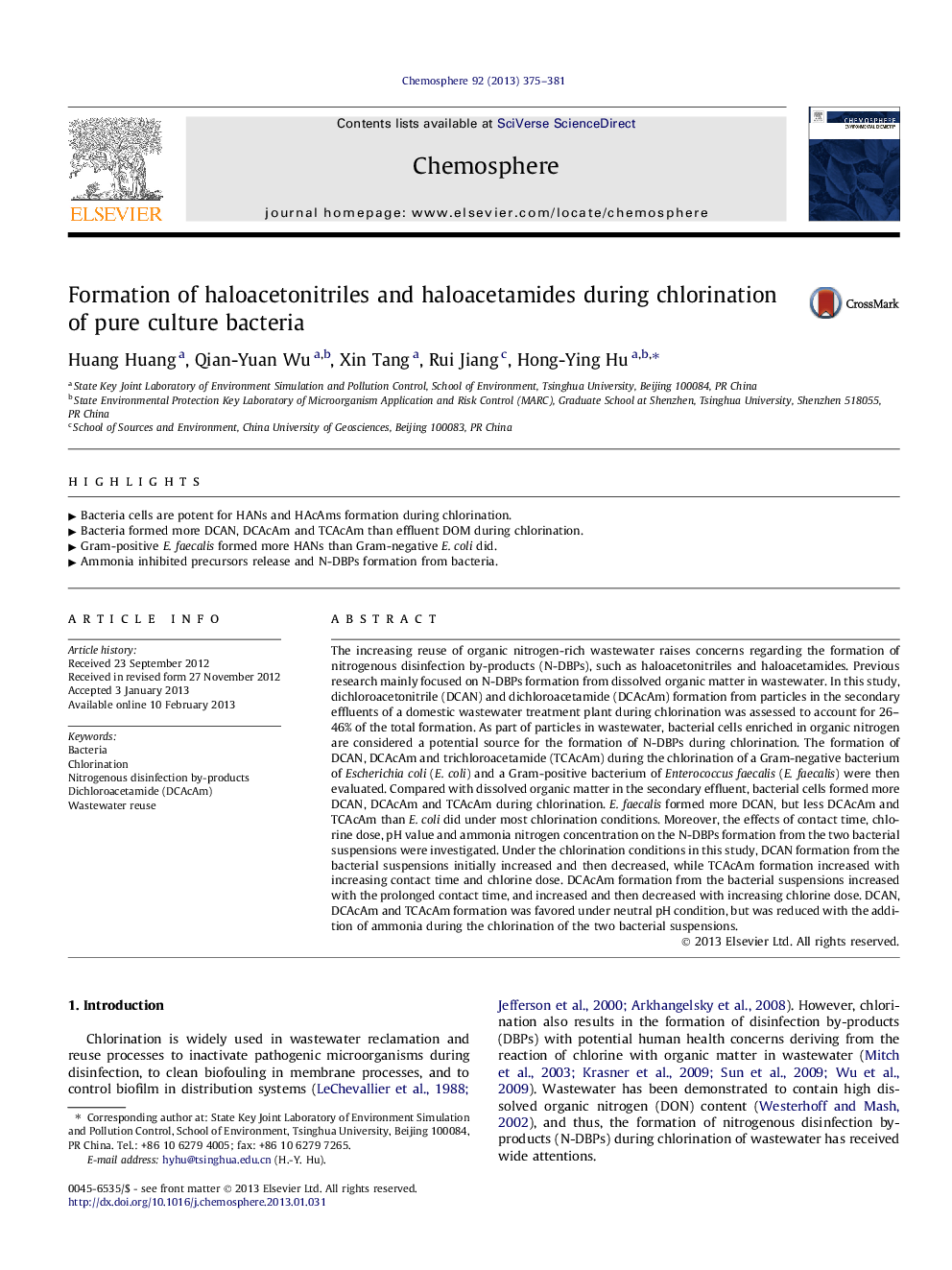| کد مقاله | کد نشریه | سال انتشار | مقاله انگلیسی | نسخه تمام متن |
|---|---|---|---|---|
| 6310399 | 1307467 | 2013 | 7 صفحه PDF | دانلود رایگان |
The increasing reuse of organic nitrogen-rich wastewater raises concerns regarding the formation of nitrogenous disinfection by-products (N-DBPs), such as haloacetonitriles and haloacetamides. Previous research mainly focused on N-DBPs formation from dissolved organic matter in wastewater. In this study, dichloroacetonitrile (DCAN) and dichloroacetamide (DCAcAm) formation from particles in the secondary effluents of a domestic wastewater treatment plant during chlorination was assessed to account for 26-46% of the total formation. As part of particles in wastewater, bacterial cells enriched in organic nitrogen are considered a potential source for the formation of N-DBPs during chlorination. The formation of DCAN, DCAcAm and trichloroacetamide (TCAcAm) during the chlorination of a Gram-negative bacterium of Escherichia coli (E. coli) and a Gram-positive bacterium of Enterococcus faecalis (E. faecalis) were then evaluated. Compared with dissolved organic matter in the secondary effluent, bacterial cells formed more DCAN, DCAcAm and TCAcAm during chlorination. E. faecalis formed more DCAN, but less DCAcAm and TCAcAm than E. coli did under most chlorination conditions. Moreover, the effects of contact time, chlorine dose, pH value and ammonia nitrogen concentration on the N-DBPs formation from the two bacterial suspensions were investigated. Under the chlorination conditions in this study, DCAN formation from the bacterial suspensions initially increased and then decreased, while TCAcAm formation increased with increasing contact time and chlorine dose. DCAcAm formation from the bacterial suspensions increased with the prolonged contact time, and increased and then decreased with increasing chlorine dose. DCAN, DCAcAm and TCAcAm formation was favored under neutral pH condition, but was reduced with the addition of ammonia during the chlorination of the two bacterial suspensions.
⺠Bacteria cells are potent for HANs and HAcAms formation during chlorination. ⺠Bacteria formed more DCAN, DCAcAm and TCAcAm than effluent DOM during chlorination. ⺠Gram-positive E. faecalis formed more HANs than Gram-negative E. coli did. ⺠Ammonia inhibited precursors release and N-DBPs formation from bacteria.
Journal: Chemosphere - Volume 92, Issue 4, July 2013, Pages 375-381
